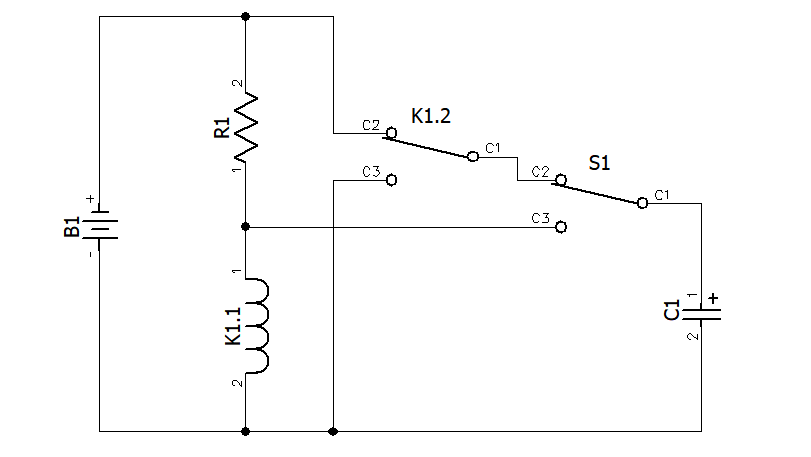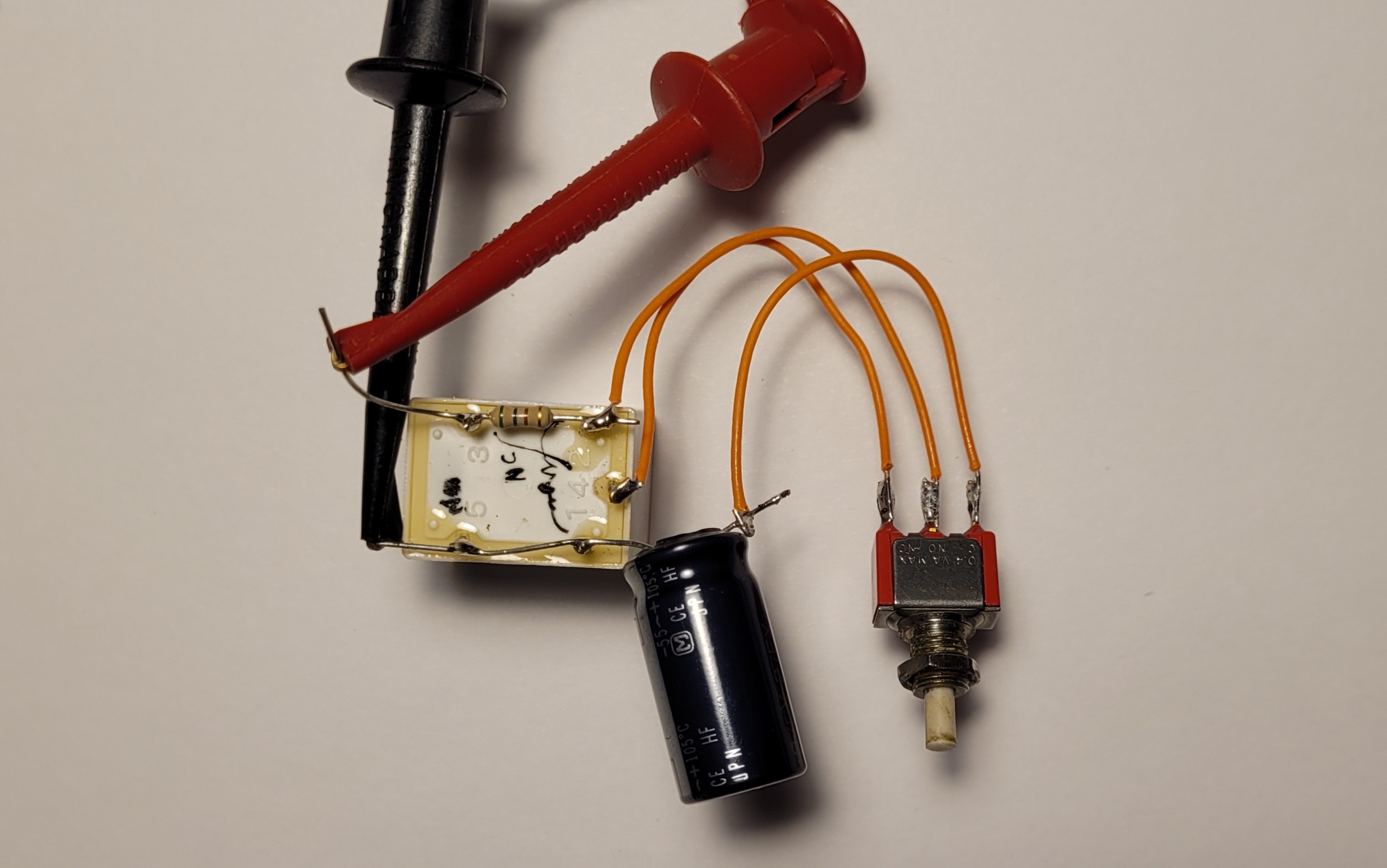
Figure 1 - Relay flip-flop circuit
Relay Latching / Un-latching circuit
Figure 1 - Relay flip-flop circuit
In one of my books this handy circuit for latching and un-latching a relay looked intriguing so I tested it on the bench to verify its functionality. In the circuit, the resistor provides a holding current for the relay but not so much as to allow it to function. In the off state, the capacitor is charged through the relay contacts and the NC contact of the momentary switch. When the momentary switch is depressed, the charge on the capacitor is dumped across the relay coil, pulling it in. Once pulled in, the current through the resistor is enough to hold the relay on. With the relay contacts in the opposite state, the capacitor is discharged through the momentary switch. When the switch is toggled, the capacitor presents an initial short across the relay coil, de-energizing it.

Figure 2 - Circuit as tested; pretty simple
For my version of this, I used a junk box 12V SPDT relay. I checked the pull in voltage at around 8V and the drop out was around 3V. The measured coil resistance was 400 ohms. I decided on 5V as a good idle current for the coil and chose a 560 ohm resistor value. Since the original circuit did not indicate values and not knowing what capacitor value to use I tried a 330uf value. I kludged the circuit together on the bench, applied 12V and the circuit performed as the article intended. Pressing the switch latched the relay, pressing it again un-latched it. A small value resistor can be placed between C1 of K1 and C2 of S1 to slow the charge/discharge current and prevent arcing. The nice thing about this circuit is if power is lost, the circuit will drop out and will not re-enable when power is restored, which would be ideal for a power on/off application.
